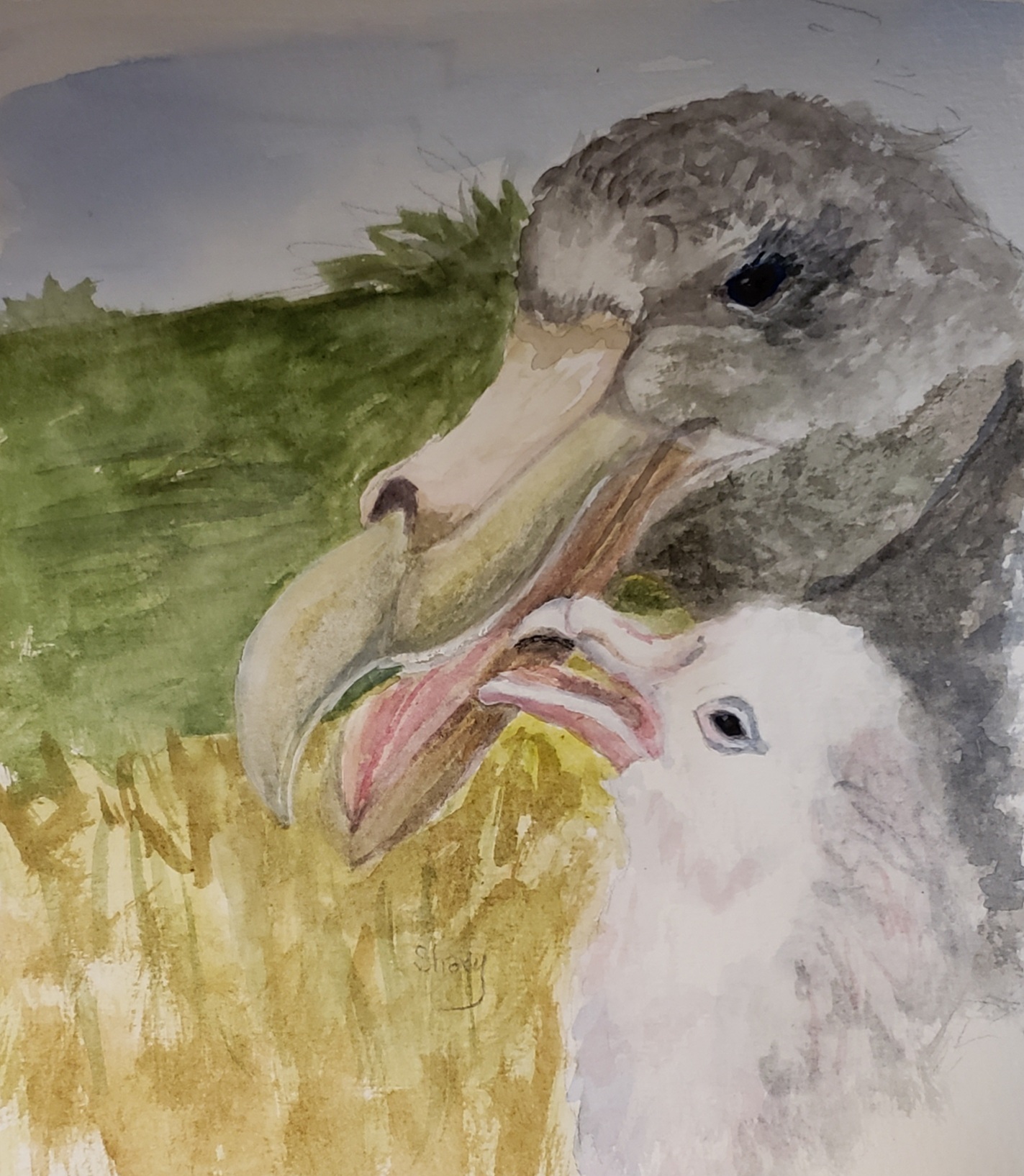
A Southern Giant Petrel chick begs for food, watercolour by ABUN artist Shary Weckwerth; after a photograph by Michelle Risi
Ted Lownie (Department of Biology, Dalhousie University, Halifax, Canada) and colleagues have published in the journal Comparative Biochemistry and Physiology Part A: Molecular & Integrative Physiology on oxygen-carrying capacity of breeding giant petrels Macronectes spp,
The paper’s abstract follows
“Reproduction, and parental care in particular, are among the most energy-demanding activities within the annual cycle of adult birds. Parents that cannot meet the metabolic demands and other physiological costs of raising offspring may opt to abandon chicks in favour of self-maintenance and future reproduction. Recent work examining reproductive trade-offs in birds revealed an important role of oxygen carrying capacity in mediating variation in parental effort. This study explores the aerobic factors underlying the success or failure of parental care in two closely-related petrel species during their breeding season on Bird Island, South Georgia: northern giant petrels (Macronectes halli) and southern giant petrels (M. giganteus). Failed breeders of both sexes and species had significantly lower hematocrit levels (by 5.48 ± 0.64%) than successful breeders, and reticulocyte counts also tended to be lower in failed males, consistent with the hypothesis that parental care and workload depend on aerobic capacity. We discuss these results in relation to differences in the foraging ecology of both species and sexes.”
With thanks to Richard Phillips, British Antarctic Survey.
Reference:
Lownie, T., Jubinville, I., Williams, T.D., Phillips, R.A. & Crossin, G.T. 2022. Varying aerobic capacity in relation to breeding stage and reproductive success in giant petrels (Macronectes spp.). Comparative Biochemistry and Physiology Part A: Molecular & Integrative Physiology 266. 111155.
John Cooper, ACAP Information Officer, 24 January 2022

 Español
Español  English
English  Français
Français